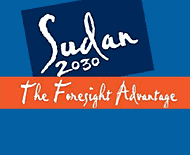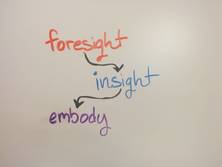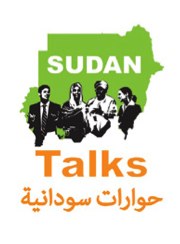Future Now
The IFTF Blog
The Foresight Advantage: Sudan 2030
 Earlier this year IFTF started a new partnership with United Nations Development Program’s Sudan office. Together we are embarking on a long-term project to develop local images of possible futures for Sudan. Our hope is that creating a range of scenarios of Sudan 2030 will engender dialogue between fragmented groups, build agency over the future, and influence sustainable human development.
Earlier this year IFTF started a new partnership with United Nations Development Program’s Sudan office. Together we are embarking on a long-term project to develop local images of possible futures for Sudan. Our hope is that creating a range of scenarios of Sudan 2030 will engender dialogue between fragmented groups, build agency over the future, and influence sustainable human development.
I’m especially excited about this project because it's an exceptional opportunity to go into the field and further explore how systematically thinking about possible futures can promote positive social change.
I think a new model may even be emerging...

As we generate local images of possible futures, we need to embody our preferred futures. When we are aiming for social change, action can’t always be outward facing, like with the vast majority of development initiatives. Today’s development—including cutting edge design thinking and human-centered design—is built on the assumption that proper development is accomplished by intervening in poor or underdeveloped places, implicitly stating that the problem to be fixed lies within poor communities themselves. But the problem that drives social and economic inequality lies within the larger system and the power-holders. So how can we influence change within a larger system? The key for a successful foresight - insight - embody process is, perhaps, getting the right people to embody the right future, or important elements of a variety of preferred futures.
How can grassroots communities influence the Sudanese central government or the international community to pay closer attention to the needs of everyday citizens? To embody their preferred futures?
 The Foresight Advantage: Sudan 2030 — Part 1
The Foresight Advantage: Sudan 2030 — Part 1
On November 2nd IFTF and UNDP Sudan ran a conference for over 100 participants in Khartoum as an introduction to futures thinking and a continuation of UNDP Sudan's "Sudan Talks" initiative. Check out a Storify of the event.
The aim of the conference was to slowly introduce futures thinking as a methodology for national planning and sustainable human development to important partners in Khartoum. We had participants from government, development partners, academia, youth, and private sector. The day was broken into two parts: the morning focused on futures thinking methodology and how it has been used within Africa as part of national planning and sustainable development initiatives. The afternoon was an unconference about urgent futures for Sudan. The topics were varied and interesting – and many don’t match what those outside of Sudan would assume to be of urgency. One thing that is important to note in this environment is that what is not said is just as important than what is said.
Unconference topic discussions:

During the closing plenary people expressed great interest in thinking more deeply about their future, and saw futures thinking as a useful tool for creating sustainable human development that is based on a diversity of opinions and perspectives. One participant, reflecting on the challenge in Sudan for youth and elders to see eye-to-eye, noted that during the afternoon sessions they were able to work together after finding common ground in the future.
Imagining possible futures is a safe space to build dialogue and understanding between conflicting or fragmented communities.
The Foresight Advantage: Sudan 2030 — next steps
In December we’ll go back to Sudan to run two of four regional state-level scenario-building workshops—Kassala in the east and Karima in the north. The workshops will be 100% in Arabic, so we will train Sudanese facilitators to run the workshops with a process for capturing and translating the ideas for later analysis. Our hope is to:
- build agency over creating preferred futures for workshop participants.
- build trust among the diverse participants.
- give voice to disenfranchised communities by creating an avenue for dialogue with the federal government.
- gather rich material for creating robust and local images of possible futures for Sudan.
Once we have completed the all four regional scenario-building workshops (sometime next year) we’ll create four scenario videos of Sudan 2030. These videos will explore possible futures for Sudan as imagined on the state-level, and will be shared in a series of federal summits with participation from the states. The federal summits will be an additional avenue for building dialogue and shared visions of possible futures for Sudan.



